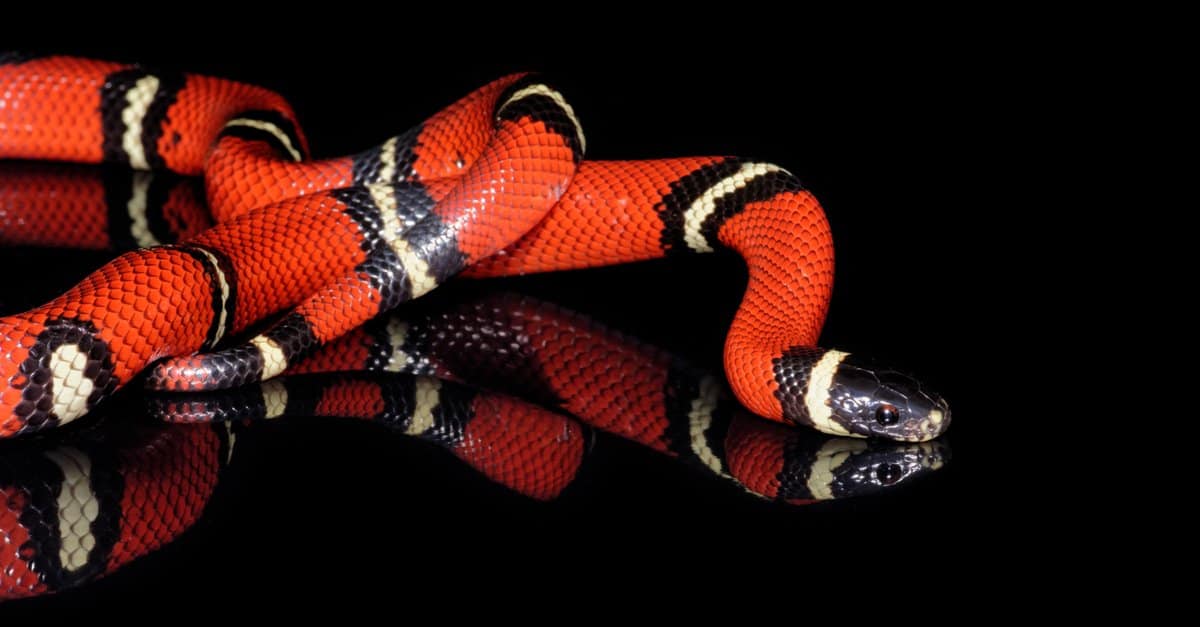The 47 Snakes of Georgia (Plus 7 Venomous Ones!)

Understanding the Venomous Snakes of Georgia
Georgia, nestled between the Deep South and the Atlantic Ocean, is renowned for its natural beauty. The state is home to 47 different snake species, with only seven being venomous. While this may seem concerning, it's important to note that most of these snakes are not a threat to humans. However, there are some similarities between venomous and non-venomous species, which can lead to confusion.
Despite the potential for danger, Georgia's snakes are generally not aggressive towards people. By learning about these creatures and taking precautions in the wild, individuals can significantly reduce their risk of encountering a venomous snake. Here’s an overview of the venomous snakes found in Georgia.
Eastern Diamondback Rattlesnake
The Eastern Diamondback Rattlesnake is the largest rattlesnake species in the world, often reaching lengths of up to eight feet. Most individuals, however, are between three to five feet long. This snake is easily identified by its distinctive diamond pattern on its back, broad head, and two light lines on its face. It inhabits dry, sandy areas, pinewoods, and coastal dunes, primarily in the Lower Coastal Plain region.
These snakes are skilled hunters, capable of striking prey from a distance. Despite their size, they are shy and will only attack if threatened. It's crucial to listen for their rattling sound and be cautious during summer mornings and evenings when they are most active.
Pygmy Rattlesnake
In contrast to the Eastern Diamondback, the Pygmy Rattlesnake is one of the smallest rattlesnakes, typically not exceeding two feet in length. Its small rattle makes it difficult to detect, which can make it challenging to avoid. These snakes are commonly found under logs and in leaf piles, where they hunt lizards and mice. They prefer habitats near water sources such as marshes or creeks but can also live in wet or dry areas.
Their coloration varies, including shades of gray, tan, lavender, and even orange or red. Due to their small size, they are often overlooked, making awareness essential for those spending time outdoors.
Eastern Coral Snake
The Eastern Coral Snake is unique among Georgia's venomous snakes because it lacks a rattle. It has a distinct appearance with bright red, yellow, and black coloration. This color scheme is similar to the non-venomous Scarlet Kingsnake, leading to potential confusion. A helpful tip to distinguish them is that the coral snake's red bands touch only the black ones, while the Scarlet Kingsnake's red bands touch the yellow ones.
Eastern Coral Snakes are relatively small, reaching about three feet in length. They are most active during spring and fall, feeding on frogs, lizards, and other snakes. Their presence is common in marshes, sandy areas, and suburban regions.
Cottonmouth
There are two species of cottonmouth snakes in Georgia: the northern cottonmouth and the Florida cottonmouth. Known for their white-colored mouths, they are often referred to as "water moccasins" due to their semi-aquatic nature. These snakes are typically dark brown to black with dark crossbands and range in length from 30 to 48 inches.
Cottonmouths are opportunistic feeders, preying on small animals from both wet and dry habitats. They are more prevalent in the southern half of the state, particularly around the Coastal Plain.
Non-Venomous Snakes of Georgia
Georgia is home to 40 non-venomous snake species, many of which resemble venomous snakes. Here are a few notable examples:
Scarlet Kingsnake
The Scarlet Kingsnake shares a similar coloration with the venomous Eastern Coral Snake, featuring black, red, and yellow bands. To differentiate between the two, remember the rhyme: "Red touch yellow, deadly fellow; red touch black, venom lack." However, this rule isn't always reliable. The Scarlet Kingsnake is smaller than the coral snake and is often found in wet pinelands, beneath logs, and on buildings.
Eastern Rat Snake
Georgia is home to two types of rat snakes: the Gray Rat Snake and the Eastern Rat Snake. These large snakes can grow over six feet in length and are often mistaken for venomous snakes. They emit a foul odor to deter predators and are known for hunting domesticated fowl eggs.
Northern Water Snake
The Northern Water Snake is a common species found in the northern, mountainous regions of Georgia. These semi-aquatic snakes are adept swimmers and often resemble the venomous Cottonmouth. They are typically two to four feet long and are found in lakes, streams, marshes, rivers, and ponds.
Safety and Awareness
While snake bites in Georgia are rare, it's essential to understand the local wildlife to ensure safety. Although reports suggest an increase in snake encounters, this is likely due to warmer weather and increased outdoor activity. Snakes are generally not aggressive and are more afraid of humans than vice versa.
By educating oneself about Georgia's snakes and respecting their habitats, individuals can enjoy the state's natural beauty without unnecessary fear. Remember, non-venomous snakes are protected in Georgia, and killing them is illegal. Taking the time to learn about these fascinating creatures can help prevent misunderstandings and promote coexistence.
Post a Comment for "The 47 Snakes of Georgia (Plus 7 Venomous Ones!)"
Post a Comment